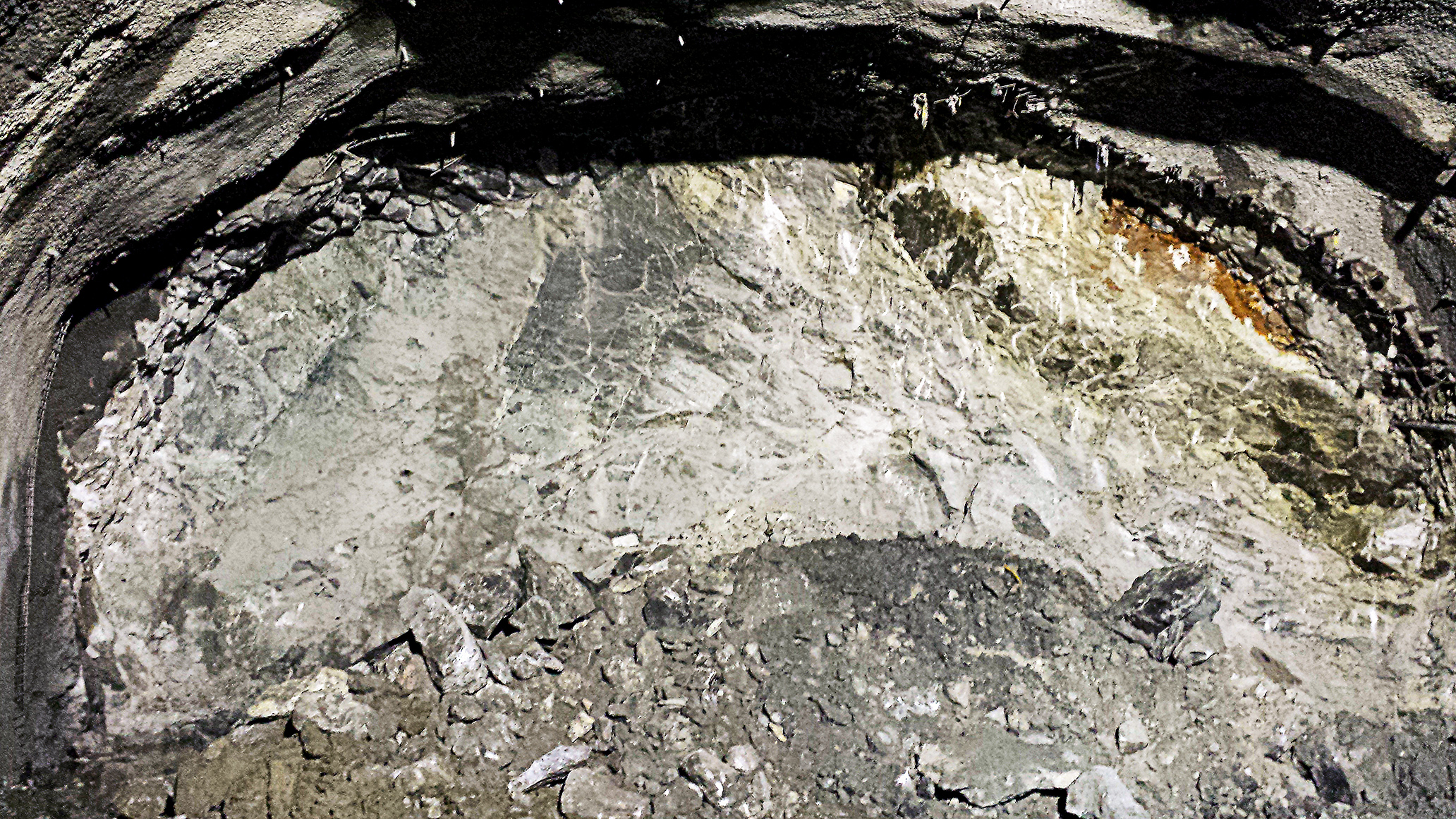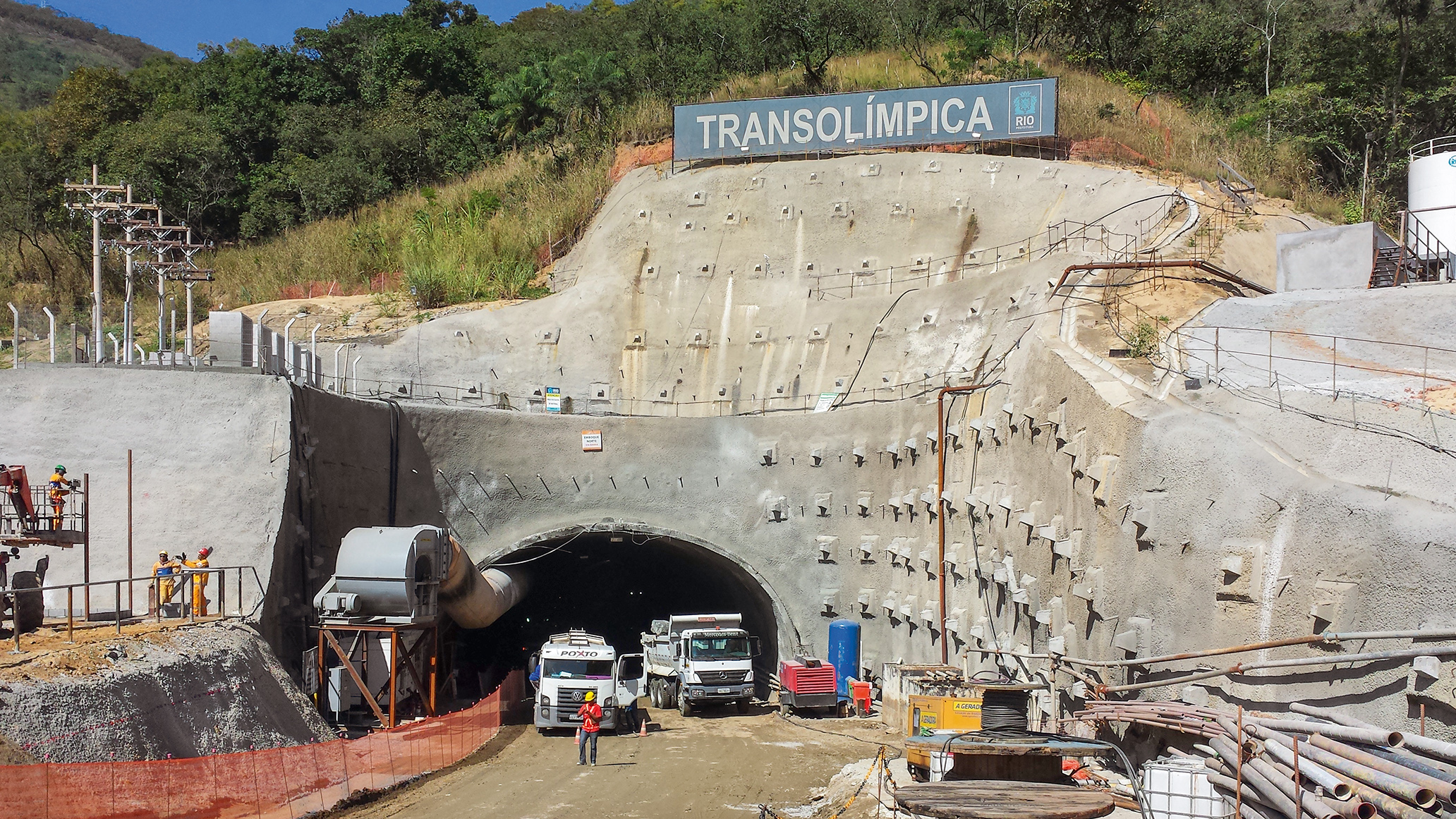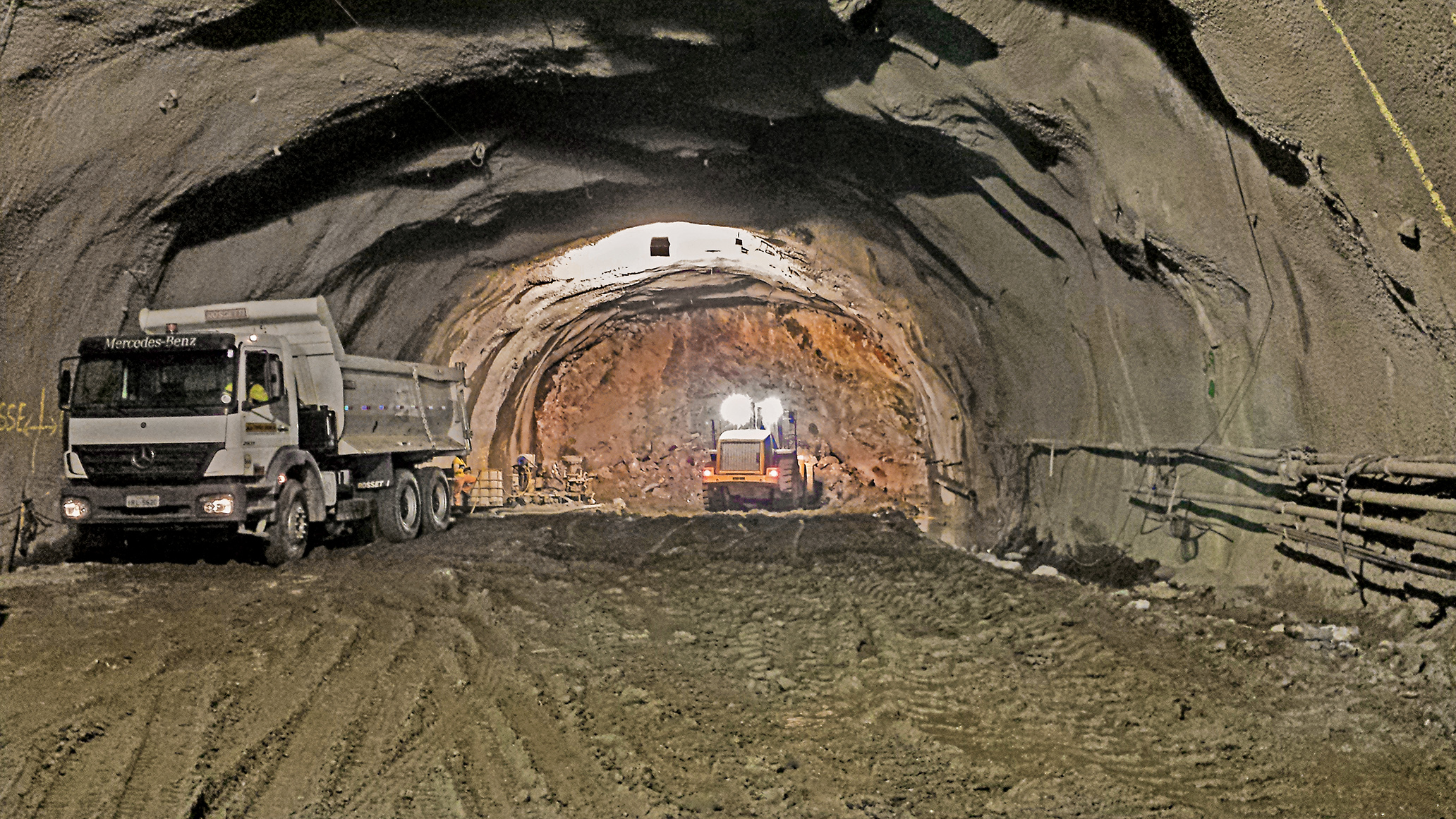



The Transolímpica Tunnel: Easy and Fast Stabilization using DSI GRP Rock Bolts
The Transolímpica Bus System is currently under construction in Rio de Janeiro in preparation for the 2016 Olympic Games. The new route is one of three mass transit routes in Rio. Adjacent to the bus lanes, there will be two toll lanes each for vehicular traffic. After its completion, the 23km long Transolímpica will connect the districts of Deodoro and Barra, the two most important venues for the 2016 Olympic Games.
A double tube tunnel is being built in the western section of the route. This Transolímpica Tunnel, designed for 55,000 vehicles per day, will run through the Engenho Velho Mountain Massif.
The tunnel portal is located in a strongly fissured and unstable slope that had to be comprehensively stabilized in advance. The required slope stabilization measures were carried out using shotcrete and temporary rock bolts.
To stabilize the tunnel portal, DSI Underground Brasil recommended the use of glass fiber reinforced rock bolts (GRP Anchors) to the owner. DSI GRP Systems, characterized by their light weight, can be installed quickly and have a high tensile load bearing capacity. Another essential advantage of the GRP system for conventional tunnel driving by blasting and excavation is that they can be cut and removed easily and quickly so that they do not obstruct tunnel driving.
For the quick and efficient stabilization of the portal area, DSI Underground Brasil supplied the Type CS-20 and CS-25 DSI GRP System.
